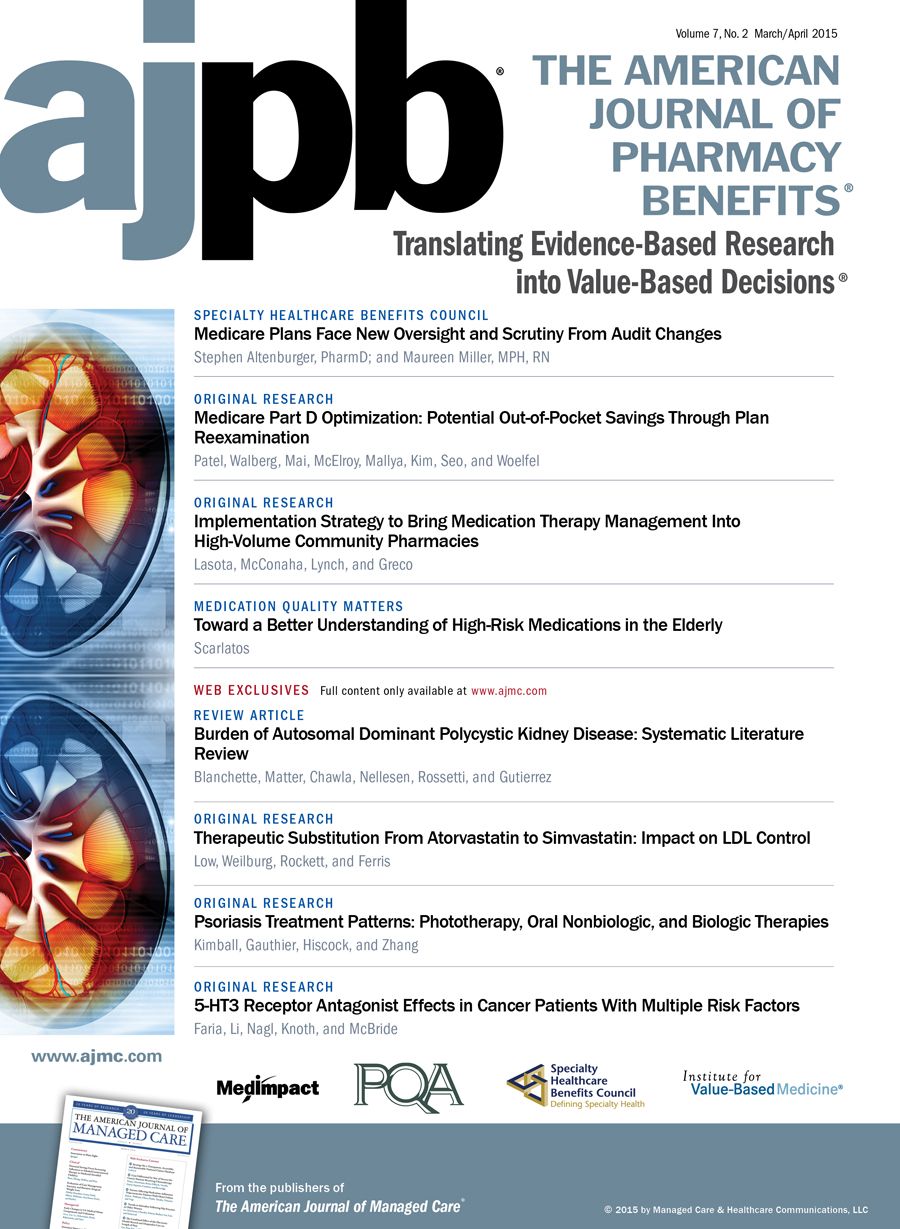Publication
Article
AJPB® Translating Evidence-Based Research Into Value-Based Decisions®
Sinking the Titanic
Author(s):
Questions of cost and value are ones that each stakeholder group in healthcare will have to answer.
I walked into the car dealership looking for my next car. I had done my research, and I knew in general what I wanted: something safe, with new technology, that would be fun to drive. I had it narrowed down to 3 cars and walked up to my first choice, which had both a great safety record and impressive mileage ratings. Little did I know, however, that I would quickly lose my breath due to the cost oh well, second best will have to do.
We are all still reeling from the $80,000 price tag associated with the new hepatitis C drug. While we believe that this medication has significantly better outcomes, cure versus control, and a better side effect profile, we also know that the cost is one that most organizations will have a difficult time budgeting for in today’s environment. I was recently in Spain on a medical educational mission and asked the Ministry of Health representative how they were handling the introduction of this new medication. His response to me was that it was a good drug, but one that they, as a country, could not afford.
This question of cost is not one that will go away. Generally, the medications that carry high price tags are those associated with conditions that afflict relatively small numbers of people. Despite this, hepatitis C, a disease that affects 3.2 million people in the United States, represents one of the first high-cost medications that would potentially be used on this many people. Soon this will no longer be the only example, as a new class of drugs to control hypercholesterolemia is coming down the pike.
Proprotein convertase subtilisin/kexin type 9 (PCSK9) is a new class of cholesterol drug that has the potential to significantly lower cholesterol; the challenge here, is that the drug will cost significantly more than those that are presently on the market. Although prices have not been set as the drug is not yet approved by the FDA, the word around the water cooler is that the PCSK9 medications will cost around $10,000 per year. At first blush, you may say a $10,000 to $12,000 range is considerably lower than the $80,000 cost for the AbbVie and Gilead medications for hepatitis C. The stark reality, is that there are 72 million people with high cholesterol, and it is believed that for around 20 million, statins will not be used, as these patients are either unable to take them or have very high cholesterol, for which statins have proved to be ineffective. This is a 6-fold increase in the potential number of people under treatment. To further compound the issue, these new cholesterol-lowering medications will be required for a lifetime, not just 12 weeks like the hepatitis C medications.
Please do not misunderstand me, I respect the work that the pharmaceutical industry does, and even have friends in the industry (yes, really). These new medications represent great improvement over those presently on the market, but the conundrum we face is: how do we pay for these groundbreaking drugs? A recent Managed Care Minute Weekly Poll queried if payers should be asked to cover the PCSK9 drugs for patients who can safely use statins. The survey showed that 67% of those who responded stated they should not be asked, whereas 33% said they should. Initially, this result did not surprise me, as most of the respondents were likely somehow associated with the managed care industry. They were probably the ones sitting in their offices already struggling with these types of questions: Do we cover the medication? And if so, what types of utilization management programs will be put in place? In recent articles quoting the 2 largest PBM organizations in the United States, CVS Health and Express Scripts, have been very public about this issue.
The next question one has to ask is, how will the costs of these medications affect others in the industry? If this same question about cost and payment were posed to physicians, what would their response be? Historically, physicians have had little knowledge about the cost of medications, but this too is beginning to change as they start to take on greater cost risks in the new models of care (eg, PCMHs and ACOs). How will this change their behaviors when it comes to high-cost medications? At present, it is too early to tell.
How would patients reply? Upward of 50% of patients have a coinsurance cost-share payment model within the pharmacy benefit. These people could be looking at a monthly out-of-pocket cost of $300 for this cholesterol medication alone. In addition, if they have a high deductible, they could face having to pay the entire amount until they reach their deductible.
These questions of cost and value are not going to go away. They are questions that each of the stakeholder groups in healthcare will have to answer. What do you think? I look forward to hearing from you.







